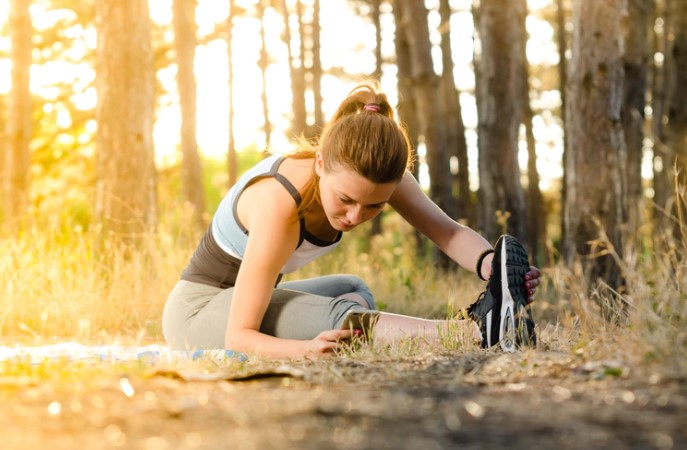Plummeting temperatures and less daylight cause many people to cut back significantly on exercise during this time of year or to shift their exercise indoors, to the warmth and comfort of their home or gym. This may be tempting, but here are three great reasons (and a few precautions) to encourage you to bundle up and head outside to stay fit, happy and healthy this winter.
You burn more calories
Research shows that exercising regularly in cold temperatures can increase the production of calorie-burning brown fat by 45% and can increase your overall metabolism significantly. This may be helpful in preventing the winter weight that often accrues due to lower levels of daily activity, reduced intake of fresh fruit and salad, and increased intake of comfort foods such as mashed potatoes and meatloaf.
Your mood improves
Exercise in general improves mood and can help reduce anxiety, stress and depression, but exercising outdoors may have added benefits, according to some studies. A 2017 study found that climbing outdoors for several hours, compared with indoor walking on a treadmill, improved feelings of pleasure and reduced feelings of fatigue.
Both exercise groups were calmer, less anxious and happier than a sedentary group, so if you really hate the cold, indoor exercise is definitely better than none.
Your overall health improves
Exercise is great for your health, but exercising outdoors may be even better. According to a large study from the National Health and Nutrition Examination Survey, outdoor exercise may decrease the risk of dying from cardiovascular disease by up to 27% over being sedentary, and it was strongly associated with higher levels of vitamin D.
Vitamin D, which drops in the winter due to reduced sun exposure (UVB rays from the sun trigger the formation of vitamin D in the skin), plays a role in bone health and fall risk, supports healthy immune function and may help protect against cancer, heart disease and diabetes.
Though the benefits of outdoor exercise outweigh the risks for most people, here are a few more important considerations.
Consider your heart
If you have a history of heart disease or two or more risk factors for heart disease — including high blood pressure, high cholesterol, family history of early heart disease, diabetes, smoking, obesity, sedentary lifestyle or poor diet — cold-weather exercise can actually cause a heart attack.
A Chinese study found that people with a history of heart disease had a 41% increased risk of dying of a heart attack during the winter. An Austrian study of winter tourists found that most heart attacks occurred in the first two days of the vacation, mainly in people who did not exercise regularly or who had two or more risk factors for heart disease.
If you are sedentary and at risk for heart disease, make sure to check with your doctor before exercising in the cold, and be sure to start exercising regularly indoors before exercising outside during the winter.
Don’t forget to drink
Even though you may not think you sweat as much exercising outdoors in the cold, you are still losing a considerable amount of body fluid, and research shows that your thirst response may be particularly blunted in cold weather. So don’t forget to drink water before, during (if possible) and after outdoor exercise to prevent dehydration.
Protect your skin
It may not seem as sunny, and it may even be cloudy, but you can still get a sunburn during the winter, so wear sunscreen with UVA and UVB protection and reapply it often, especially at higher altitudes where your risk of sun damage is even greater due to closer proximity to the sun and the reflection of sun off snow.
Cold, harsh winds can also dry out and irritate the skin, so make sure to also moisturize before and after outdoor exercise, and wear a protective face covering if conditions are especially cold and windy. Covering your mouth may also help if you have asthma, as cold air can trigger an asthma attack in some people.
Dress smart
Don’t over- or underdress if you are exercising outdoors. Exercise causes your body to heat up fairly rapidly, so bundling up too much can cause you to get overheated or to sweat, which can make you even colder when you slow down.
It’s best to wear layers so you can peel off or add one if you need to. Make sure that your bottom layer, the one closest to your skin, has wicking properties. Wool and synthetic fabrics work best to keep sweat away from your body, but cotton absorbs sweat and can cause you to get chilled when you reduce activity.
This is especially important if you are older or at risk for heart disease because your body temperature regulation may be impaired, putting you at higher risk for hypothermia, which is dangerously low body temperature. Doing warmup exercises like jumping jacks or even stretching can start heating up your body before you head out the door, making the transition to the cold more tolerable.
As you can see, it isn’t that much more challenging to move your workouts outside this winter, and the upside could be considerable. If you really hate the cold, don’t sweat it. Just keep exercising throughout the cold winter months, even if that toasty bed or fireplace is hard to resist some days.
Original article: https://edition.cnn.com/2019/01/25/health/winter-exercise-jampolis/index.html




























Comments